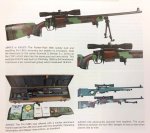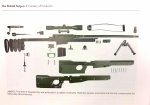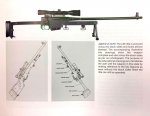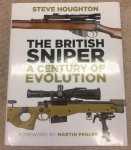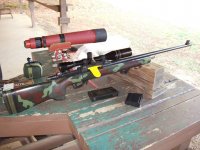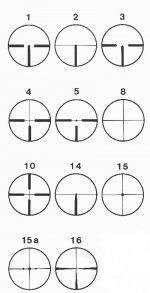Good luck finding the appropriate S&B scope for the M85, I think that's a tough one here in the USA...but hopefully you'll get lucky and find one.
I'd love to see what the final deciding factors were in the choice.
There is a great thread on milsurps.com that delves into the AI vs. PH M85 trials. Definitely worth a read.
Speaking of which, if anybody really wants to read a reference book on the PH 85 vs AI PM military trials, or is interested in any aspect of the UK's military sniping history, I recommend Steve Houghton's excellent book,
The British Sniper: A Century of Evolution (a few more are available directly form him in the UK. My copy from this summer is #1627 of 2000 that were printed). Here's page 206 from this book, which noted that both rifles were accurate enough, but the AI won due "
to its usability by the sniper in the field and the logistical elements that would have to support it keeping it front line and serviceable." Houghton states:
"The Accuracy International approach had the M85 beat by firstly building a chassis based rifle, groundbreaking at the time in comparison to the M85 which was a continuation of nineteenth century technology. The provision of four very basic tools as part of the L96 kit fit its collection of bolt-on parts; no specialist skill was needed to change defective parts which meant if the unit armorer was not available the sniper could do it himself. Reducing the weapon to five major components, chassis, barrel, receiver, trigger and scope made for an unprecedented level of versatility. The knock-on effect was an unserviceable weapon that may have had a basic fault spent minimal time being unserviceable, reducing the need to pack a rifle up in its chest with is complete CES (Complete Equipment Schedule) and send it to a command workshop for repair by a skilled armorer as was the case with the L42A1, a practice which would have continued with the M85 had it been adopted.
Fans of the M85 will still fiercely debate today as to why the M85 should have had its place in British sniping history which in some ways it does, however the M85 did not die after the MoD trial; in fact around 800 examples were produced by Parker-Hale assembled by Eddy Taff, Parker-Hale's principal armourer, and Bill Smallwood. Limited numbers of the M85 did in fact see service with the British Army as it is confirmed the SAS purchased several as well as the Parachute Regiment, particularly the second battalion who had several in their armoury.....the vast majority of the 800 examples produced were supplied to organizations such as the UK police constabularies as the Enfield Enforcer's replacement as well as the Falkland Islands defense force and several foreign armed forces elsewhere around the world..."
Attached are 4 pics from Houghtons' excellent book. Pic #2 shows the 4 small tools included with the rifle that allow a sniper in the field to easily and relatively quickly dissemble all of its components except the barrel from the receiver. (ie, if the trigger developed an issue, it could be removed by the sniper in about a minute and swapped, etc)
The M85 simply did not have that level of user serviceability - and thus logistically it lost the competition to the much more innovative AI chassis-based system. Last picture shows an interesting factoid re the AI PM/L96 system - if the side panels are damaged or otherwise destroyed in combat or a parachute drop, the rifle can still be operated and will be accurate, assuming the sniper can figure out the sub optimal grip/ergonomic issues. Again, the M85 was/is a much more traditional system and didn't have this level of serviceability/survivability.
The last attachment is an except from page 187 of Houghtons' book, which notes that British Special Forces (SBS and SAS) were unhappy with the old L42A1, and used their own funds to buy the new AI Precision Marksman (PM) rifle back in 1984/85. At that time it was
not yet officially adopted as the L96 rifle, but given that the SAS apparently replaced all or most of their L42s with 32 of the new AI PM rifles in 1985, all suggests that they really did prefer that new chassis-based system.
Bottomline: I like the historical M85 and wished I owned one too, however, the historical record is pretty clear about why the British adopted the AI rifle over the P-H M85: Superior logistical support and field serviceability by the sniper, and thus the L96 did not require shipping the complete rifle back to a specialist armorer for repairs (which was considered a logical problem with the old L42A1 at the time, and as Broughton notes, that constraint would have continued with the M85, had it been adopted). Today, its hard to underestimate how truly innovative the AI chassis system was when it formerly evaluated 35 years ago...my 2cts.




